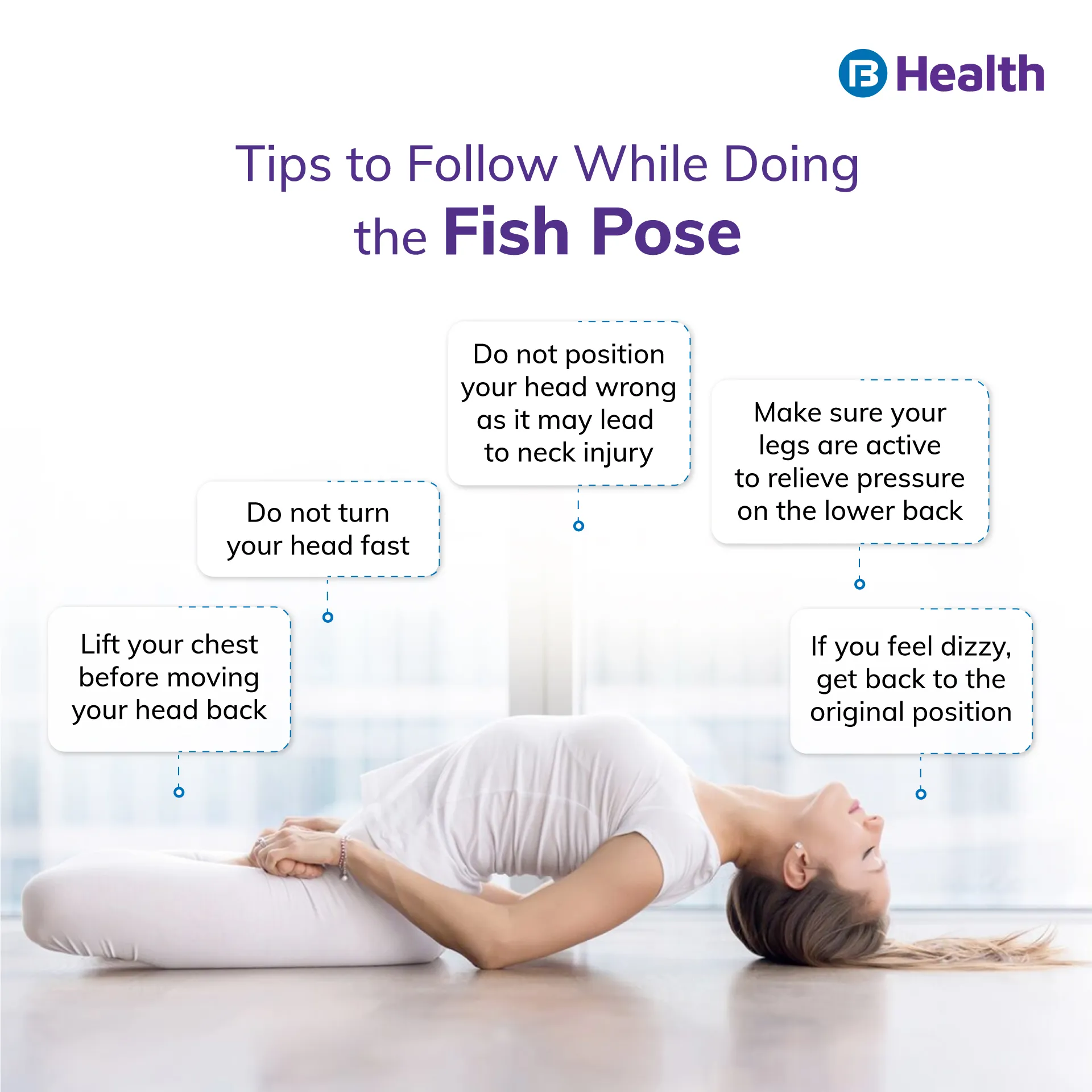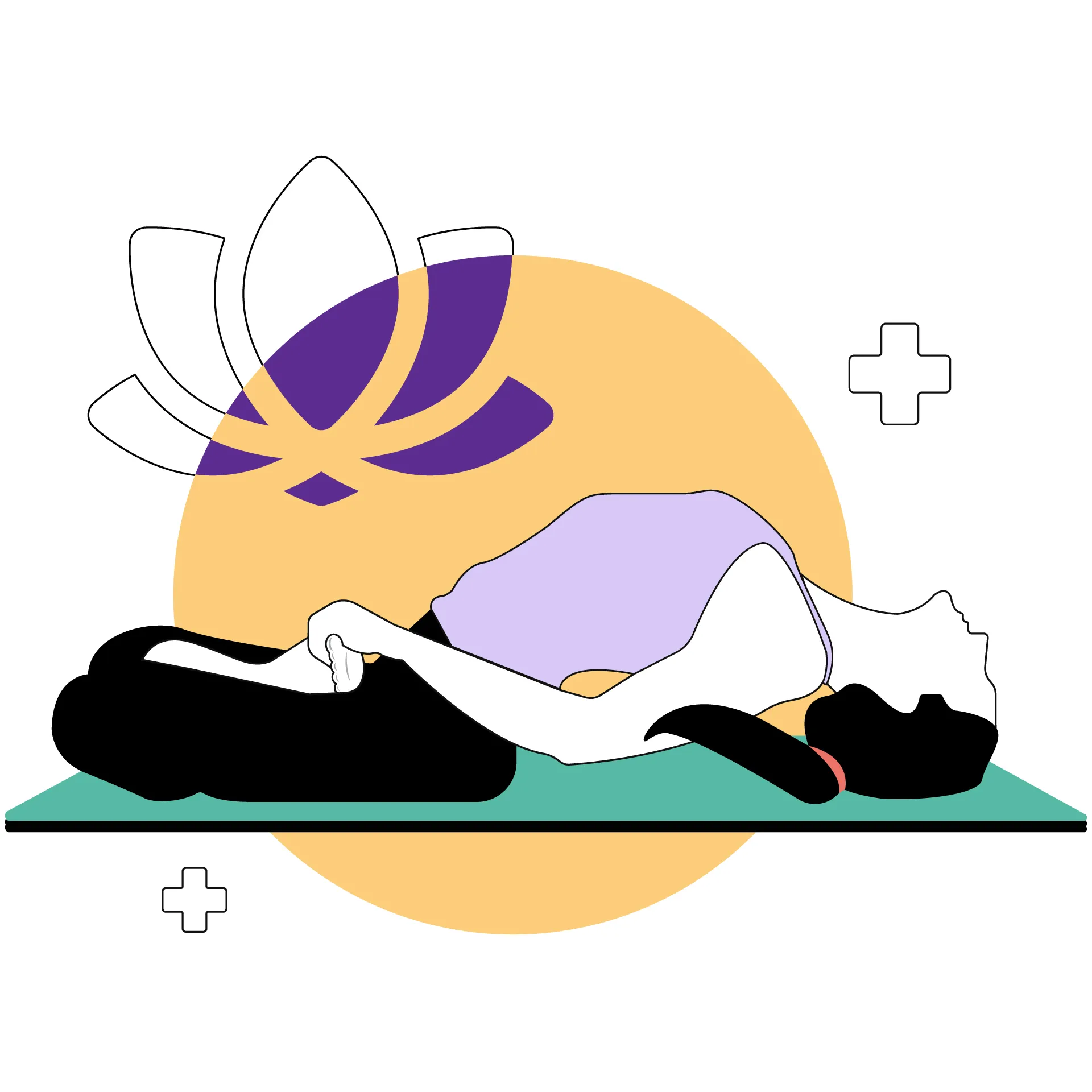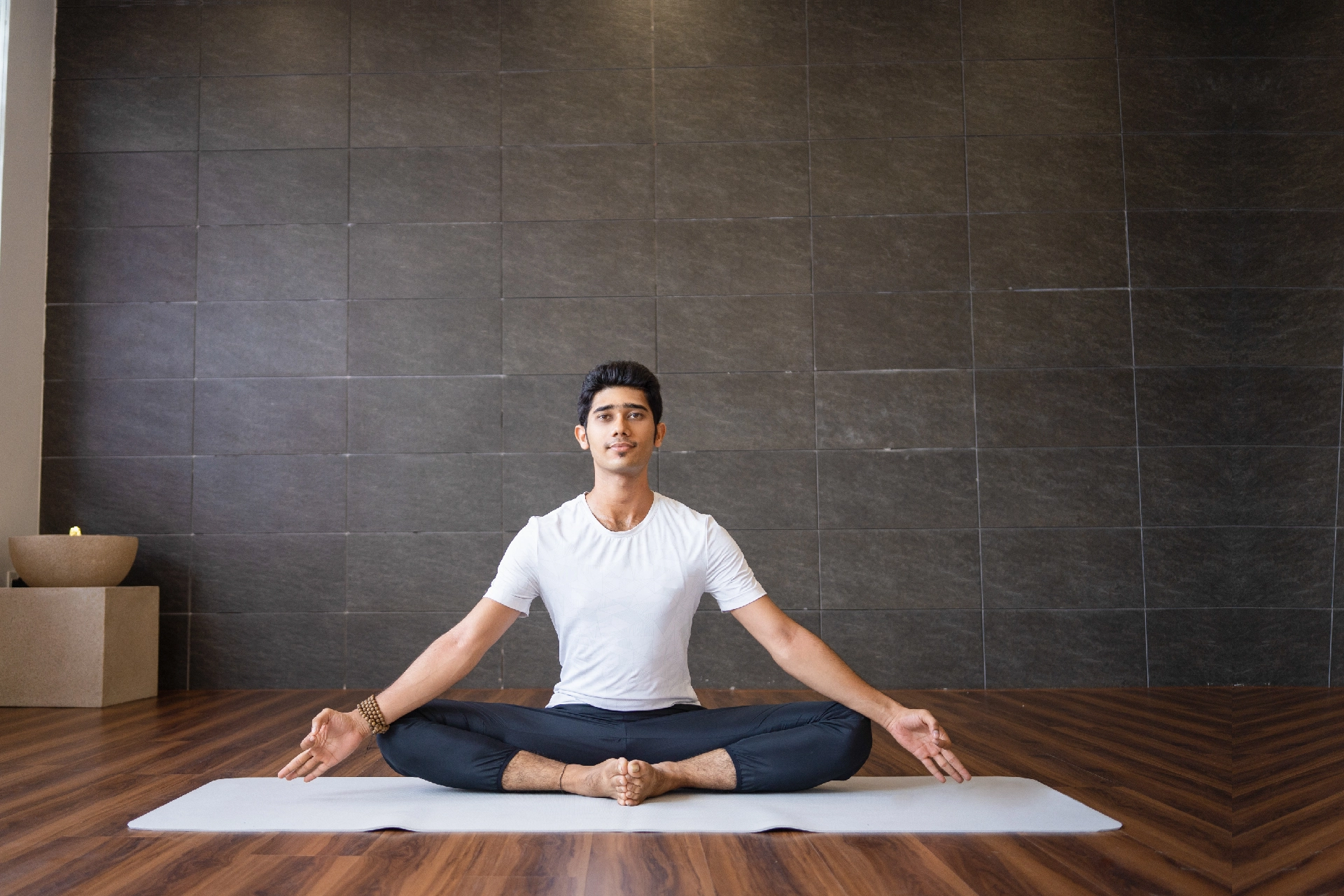Physiotherapist | 4 min read
Matsyasana: How to do This Pose and its Benefits
Medically reviewed by
Table of Content
Key Takeaways
- Matsyasana is also known as the fish pose in yoga
- Matsyasana benefits your pectoral muscles
- Avoid practicing this pose when you have a migraine
With the pandemic primarily affecting your upper respiratory tract, there are many who have resorted to yoga for improving respiration. One such yoga pose is matsyasana. Matsyasana yoga is one of the effective asanas of yoga for the thyroid. Since this pose helps stretch your neck and throat, your thyroid gland is also stimulated [1]. As a result, it starts to produce thyroid hormones actively. This way you can overcome symptoms of hypothyroidism.
If you are wondering how this pose got its name, there is an interesting story behind this. Matsyasana, also known as fish pose in yoga, got its name from Sanskrit. Matsya was one of the ten incarnations of Lord Vishnu. When Vishnu realized that a major flood could wash away the whole of Earth, this matsya was created to transport everyone to a safe place.
Practicing fish pose helps instill resilience and focus whenever you feel a little out of balance. The best part is you do not need any fancy yoga equipment to complete this pose. A sturdy yoga mat is all that matters! Read on to understand matsyasana benefits and the process of doing fish pose in yoga.
Additional read: Yoga for Thyroid
How to do the fish pose?
Follow these simple steps to complete this pose [2].
- Step 1: Lie down in a comfortable way with your back on the ground.
- Step 2: Keep your feet together and relax your hands alongside your body
- Step 3: Place your hands beneath hips and get your elbows close to each other
- Step 4: Breathe in slowly and lift your chest and head while doing so
- Step 5: Lower your head in a backward direction and keep your chest elevated
- Step 6: Touch top of your head on the floor
- Step 7: Keep your elbows firmly on the ground and place your weight on your elbows
- Step 8: Lift your chest slowly while pressing your legs and thighs on the floor
- Step 9: Stay in this pose as long as you can by taking slow and deep breaths
- Step 10: Lift your head up slowly and lower your chest and head to the floor
- Step 11: Bring your hands back to the original position and relax your body
Which muscles does fish pose in yoga help?
These are some of the muscles that this pose benefits:
- Pectoral muscles
- Spinal extensors
- Abdominal muscles
- Neck extensors
- Rotator cuff muscles
- Neck flexors
What are different variations of fish pose?
There are 3 main variations of fish pose you can try out. The first variation is called fish on elbows in which you keep your head in a lifted position. Another variation is to complete the pose by placing a rolled blanket beneath your head. You may also try this pose by placing two blocks on tops of the mat. Place blocks in such a way that your shoulder blades rest on bottom block while the back of your head gets support from the top block.

Are there any risks and precautions you need to take?
When doing the fish pose, take care to follow certain precautions. Be aware of the risks you may face if you do not get this pose right.
- If you are facing neck stiffness, doing this pose may worsen your condition.
- If you have high blood pressure, you may refrain yourself from doing it.
- This pose is a big no if you have vertigo issues.
- In case you have migraine, avoid the fish pose.
- If you have diastasis recti, avoid doing this pose.
- In case you are suffering from spondylitis, it is better not to attempt this pose.
What are the benefits of doing fish pose?
Practicing this pose can provide many benefits:
- It helps in stretching your neck and chest
- It also aids in toning your thyroid and pituitary glands
- Deep breathing during this pose can relieve you from respiratory disorders
- If you are suffering from rheumatoid arthritis, doing this pose can be beneficial
- This pose may help you reduce depression
Apart from knowing the benefits of fish pose, remember that you should do it in the right way. If it is not done correctly, it could result in a severe neck injury. To get advice on such issues, reach out to top yoga and naturopathy experts on Bajaj Finserv Health. Book an in-person or online doctor consultation and learn the right way of executing the fish pose yoga.
References
- https://medicsciences.com/f/2019/04-30/IMPACT-ON-INTRAOCULAR-PRESSURE-BEFORE-DURING-AND-AFTER-FISH-YOGA-POSE_1554967484.pdf,
- https://www.artofliving.org/yoga/yoga-poses/fish-pose
Disclaimer
Please note that this article is solely meant for informational purposes and Bajaj Finserv Health Limited (“BFHL”) does not shoulder any responsibility of the views/advice/information expressed/given by the writer/reviewer/originator. This article should not be considered as a substitute for any medical advice, diagnosis or treatment. Always consult with your trusted physician/qualified healthcare professional to evaluate your medical condition. The above article has been reviewed by a qualified doctor and BFHL is not responsible for any damages for any information or services provided by any third party.



